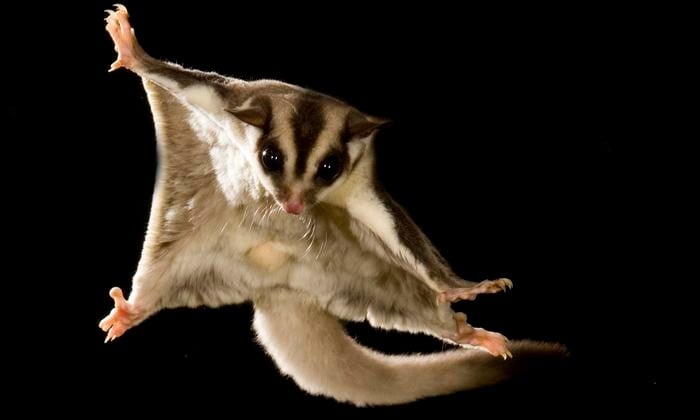A team of researchers from Princeton University and Baylor College of Medicine has shed light on the genomic and developmental basis of the patagium, the thin skin membrane that allows some mammalian species to glide through the air. By comparing the genomes of 15 marsupial species, both gliding and non-gliding, the researchers discovered that accelerated evolution near a gene called Emx2 plays a crucial role in the development of the patagium.
Dr. Erez Lieberman Aiden, professor of molecular and human genetics at Baylor, said, “What’s interesting is that the sequence of the gene itself doesn’t seem to be where the most relevant changes are taking place. Instead, the key changes are in short DNA sequences, called ‘enhancers,’ that lie nearby in the genome. It’s those changing enhancers that alter how and where in the body Emx2 is active, and that drives the evolution of gliding.”
Studying Emx2 Expression in Marsupial Joeys
The researchers took advantage of the unique characteristics of marsupials, particularly their pouch, to test their ideas. Marsupial joeys are born at an earlier stage in development compared to typical mammals and continue their development in their mother’s pouch, making it easier to study how individual genes like Emx2 affect their development.
The study showed that Emx2 gives rise to the marsupial patagium using a genetic program that likely exists in all mammals. While Emx2 is active in the skin on the sides of both mice and sugar gliders, it is expressed for a much longer period in sugar gliders. Dr. Olga Dudchenko, assistant professor of molecular and human genetics at Baylor, noted, “By modifying those critical Emx2 enhancers, one species after another has tapped into this universal program in order to develop the ability to glide.”
The findings of this study provide valuable insights into how novel traits and adaptations originate from a molecular and genetic perspective, and how evolution has shaped the ability of some mammalian species to glide through the air.
[Image: An artistic rendering of a sugar glider soaring through the air, with its patagium fully extended. The image is overlaid with a stylized representation of the Emx2 gene and its nearby enhancers, symbolizing the genetic basis of the patagium’s development.]
If our reporting has informed or inspired you, please consider making a donation. Every contribution, no matter the size, empowers us to continue delivering accurate, engaging, and trustworthy science and medical news. Independent journalism requires time, effort, and resources—your support ensures we can keep uncovering the stories that matter most to you.
Join us in making knowledge accessible and impactful. Thank you for standing with us!

